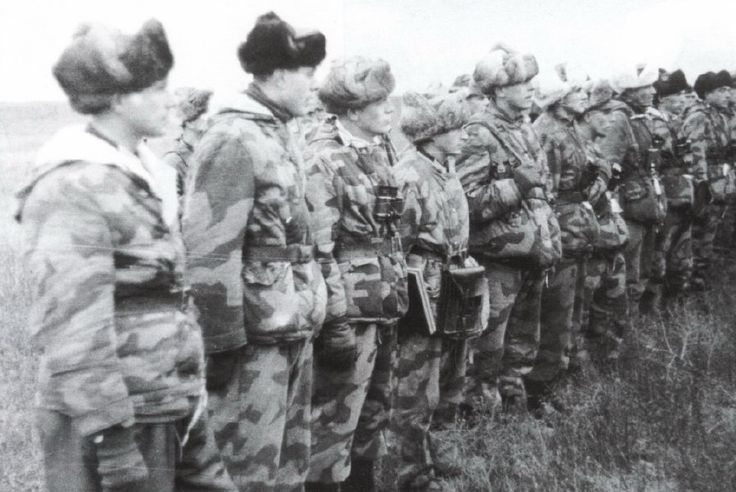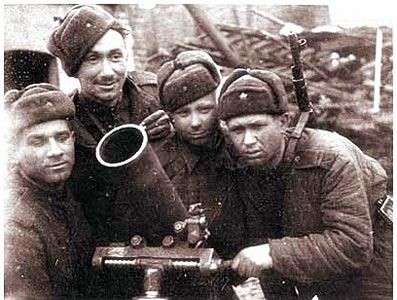My Observations
Over the past three days I spent twelve-and-a-half hours reading this thread in its entirety, start to finish. This is what I have concluded; I want to be clear-- these are, of course, my own observations. But I have no dog in this fight, and I approached this subject with as open of a mind as possible.
<O </O
</O
To paraphrase the detractors, their key arguments are: Bad material, odd print, odd gray and green threads, a bad mixture of buttons, no drawstrings, odd/bad garment cut, no other camo material pieces added, all from the same dye lot, no period photo, no other items made from this cloth (except for helmet covers already agreed to as fake) (327, 1021).
<O </O
</O
Now as I understand it, the supporters of pink smocks believe they are original because:
<O </O
</O
1. "Different does not automatically mean bad" (158)
2. Laces were not installed by the manufacturer and were lost (145)
3. "The elastic taken out of a pink smock was matched exactly against a pre May 45 product" (154)
4. "They may even have had to be washed so they could have been released by customs and not destroyed" (187)
5. But not all were washed (1731/1732), or at least not all to the same extent (1412/1413)
6. "I can not make sense or account for these as fakes" (238)
7. Other originals were found in hoards long after the war (296, 297, among others)
8. "if someone had a 'silver bullet' providing hard evidence these were replica it would have been used" (346)
9. The differences between pinks and others "are really not differences at all" (376)
"the material and the colors are NOT radically different between a pink smock and a standard German piece, and it's important to realize that. In terms of material weave (tightness, thread count, weight) they are so similar to the regular German camo as to be indistinguishable” (711).
10. They are so different, that why would a faker make something with so many anomalies rather than get it right? (689)
11. The pink (or brick) color "is an effective SS camo pattern for that time" (691/707)
12. The odd fabric is because "these may be a variation that was made in 42-43 from large captured stock of substitute fabric and perhaps even made in a different country than Germany" (426).
13. The HBT has been matched to HBT in some Dachau M43 caps (647)
14. They have Russian stamps inside, which proves the smocks are original (557)
15. Having Russian stamps in them that match Rusian stamps in known originals puts them in the same place and is "100% factual physical proof of a geographical location now" (558)
16. They are type 2; a faker would have made type 1, which is easier to make and brought higher prices, hence "there could have been no money made on these if they were new made" (651, 670, 712, 1057)
"if they were fake whoever made them lost thousands of dollars back then and there is no way anyone can deny that" (378)
17. They were in Soviet inventories in 1947. (744)<O </O
</O
18. A collector in <?xml:namespace prefix = "st1" ns = "urn:schemas-microsoft-com:office:smarttags" /><st1:country-region><ST1 lace>Spain</ST1
lace>Spain</ST1 lace></st1:country-region> write a “good/ proper/ balanced analysis” (1026,1027 1733, 1735).
lace></st1:country-region> write a “good/ proper/ balanced analysis” (1026,1027 1733, 1735).
19. It’s been identified as original by a veteran (507, 1594)
20. One is for sale on the Internet with <ST1 lace><st1:PlaceName>Russian</st1:PlaceName> <st1:PlaceType>Museum</st1:PlaceType></ST1
lace><st1:PlaceName>Russian</st1:PlaceName> <st1:PlaceType>Museum</st1:PlaceType></ST1 lace> provenance 1791).
lace> provenance 1791).
21. “Those who continue to ignore these stamps and just insist that the smocks are fake are looking like idiots. I say this not as a derogatory personal insult toward anyone, but rather how flawed and emotional opinions are no substitue (sic) for objective analysis.” (665).<O </O
</O
Over the past three days I spent twelve-and-a-half hours reading this thread in its entirety, start to finish. This is what I have concluded; I want to be clear-- these are, of course, my own observations. But I have no dog in this fight, and I approached this subject with as open of a mind as possible.
<O
 </O
</O
To paraphrase the detractors, their key arguments are: Bad material, odd print, odd gray and green threads, a bad mixture of buttons, no drawstrings, odd/bad garment cut, no other camo material pieces added, all from the same dye lot, no period photo, no other items made from this cloth (except for helmet covers already agreed to as fake) (327, 1021).
<O
 </O
</O
Now as I understand it, the supporters of pink smocks believe they are original because:
<O
 </O
</O
1. "Different does not automatically mean bad" (158)
2. Laces were not installed by the manufacturer and were lost (145)
3. "The elastic taken out of a pink smock was matched exactly against a pre May 45 product" (154)
4. "They may even have had to be washed so they could have been released by customs and not destroyed" (187)
5. But not all were washed (1731/1732), or at least not all to the same extent (1412/1413)
6. "I can not make sense or account for these as fakes" (238)
7. Other originals were found in hoards long after the war (296, 297, among others)
8. "if someone had a 'silver bullet' providing hard evidence these were replica it would have been used" (346)
9. The differences between pinks and others "are really not differences at all" (376)
"the material and the colors are NOT radically different between a pink smock and a standard German piece, and it's important to realize that. In terms of material weave (tightness, thread count, weight) they are so similar to the regular German camo as to be indistinguishable” (711).
10. They are so different, that why would a faker make something with so many anomalies rather than get it right? (689)
11. The pink (or brick) color "is an effective SS camo pattern for that time" (691/707)
12. The odd fabric is because "these may be a variation that was made in 42-43 from large captured stock of substitute fabric and perhaps even made in a different country than Germany" (426).
13. The HBT has been matched to HBT in some Dachau M43 caps (647)
14. They have Russian stamps inside, which proves the smocks are original (557)
15. Having Russian stamps in them that match Rusian stamps in known originals puts them in the same place and is "100% factual physical proof of a geographical location now" (558)
16. They are type 2; a faker would have made type 1, which is easier to make and brought higher prices, hence "there could have been no money made on these if they were new made" (651, 670, 712, 1057)
"if they were fake whoever made them lost thousands of dollars back then and there is no way anyone can deny that" (378)
17. They were in Soviet inventories in 1947. (744)<O
 </O
</O
18. A collector in <?xml:namespace prefix = "st1" ns = "urn:schemas-microsoft-com:office:smarttags" /><st1:country-region><ST1
 lace>Spain</ST1
lace>Spain</ST1 lace></st1:country-region> write a “good/ proper/ balanced analysis” (1026,1027 1733, 1735).
lace></st1:country-region> write a “good/ proper/ balanced analysis” (1026,1027 1733, 1735). 19. It’s been identified as original by a veteran (507, 1594)
20. One is for sale on the Internet with <ST1
 lace><st1:PlaceName>Russian</st1:PlaceName> <st1:PlaceType>Museum</st1:PlaceType></ST1
lace><st1:PlaceName>Russian</st1:PlaceName> <st1:PlaceType>Museum</st1:PlaceType></ST1 lace> provenance 1791).
lace> provenance 1791).21. “Those who continue to ignore these stamps and just insist that the smocks are fake are looking like idiots. I say this not as a derogatory personal insult toward anyone, but rather how flawed and emotional opinions are no substitue (sic) for objective analysis.” (665).<O
 </O
</O






Comment